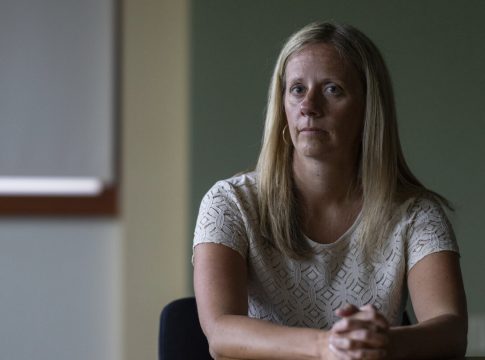Addressing Rural Mental Health Needs: A Call for Support
In certain areas, particularly in rural upstate New York, the challenge of providing adequate mental health support to students is becoming increasingly dire. With up to 1,100 students relying on a single mental health professional, the availability of resources is critically low, particularly in regions with limited public transport. Here, school counselors often act as the sole resource for students seeking mental health help.
The Impact of Funding Cuts
Recent decisions made by the Trump administration to cancel vital school mental health grants have raised significant concerns among educators and mental health professionals. Hennessey Lustica, who leads initiatives to train and hire school psychologists and counselors, poignantly expressed her worries. She says, “Cutting this funding is just going to devastate kids.” The repercussions of these cuts are far-reaching, affecting over 20,000 children across 21 school districts who would benefit from additional mental health support.
Originally initiated under a $1 billion grant program aimed at bolstering mental health resources, these efforts were a part of a comprehensive response to pressing needs following the Uvalde school shooting in Texas. The grants promoted diversity among mental health providers, crucial for effectively addressing the needs of varied student populations.
The Need for Mental Health Support
Rural students often face unique challenges. Economic instability, as indicated by reports of families moving frequently, contributes to heightened anxiety and depression among youth. In a recent survey from one county, nearly 50% of students expressed feelings of sadness or depression, while one-third noted a lack of purpose in their lives. This alarming data underscores the urgent need for supportive mental health services in school settings.
School is frequently where students receive the bulk of their mental health care. For families unable to afford private counseling—whether due to costs or transportation constraints—having a dedicated counselor at school can make a life-changing difference.
Community Voices and Consequences
Educators and mental health advocates are understandably disheartened by the cancellation of grants that have shown tangible results. For instance, Lustica’s program not only increased the number of trained professionals but also energized many students to explore careers in mental health, creating a pathway for future support. Susan McGowan, a school social worker, reflects on the importance of these training initiatives and the devastating impact of funding cuts: “It just feels catastrophic.”
In light of these challenges, communities must advocate for continued support and funding to restore essential mental health programs. As Randi Weingarten, president of the American Federation of Teachers, articulated, “These grants were funding desperately needed access to mental health care services.”
Moving Forward
As we face these realities, it is crucial to acknowledge the significant mental health challenges affecting our youth, especially in underserved areas. Here are a few steps to consider:
- Advocate for Mental Health Resources: Support local efforts to secure funding for school mental health programs and initiatives.
- Community Engagement: Encourage dialogue within your community to raise awareness about the importance of mental health services.
- Create Supportive Environments: Schools and families can work together to foster environments where students feel comfortable seeking help.
The need for mental health support is urgent and undeniable. While systemic challenges exist, together we can strive to make a difference for the mental well-being of our future generations. By prioritizing mental health, we can create a nurturing environment that empowers every student to thrive.

Covers wellness, nutrition, mental health, and daily life tips.
Bio: Talia brings a background in health journalism and holistic living to help readers live better, one tip at a time.

